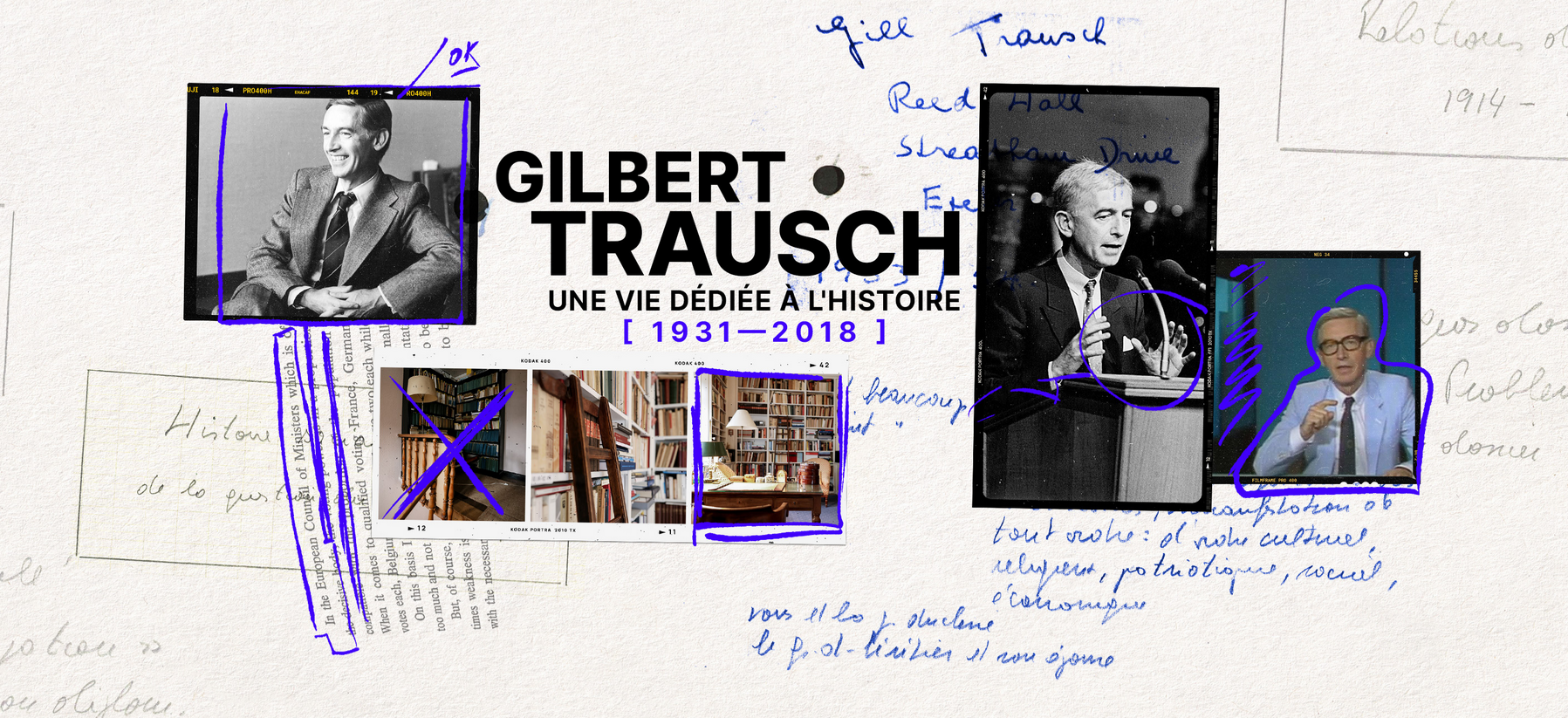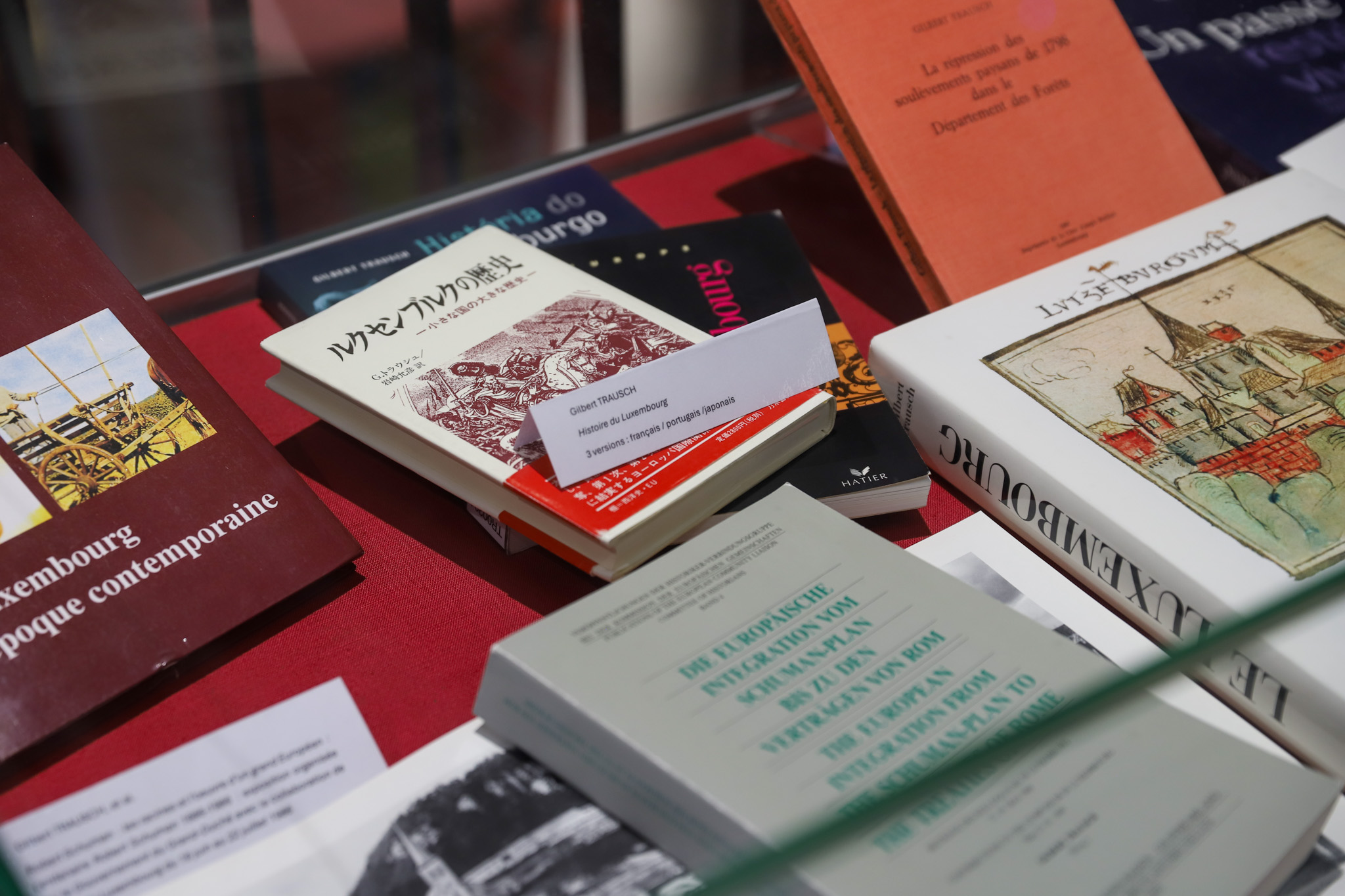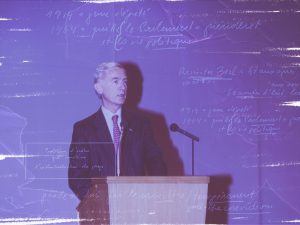The name of Gilbert Trausch might not ring a bell to many, but the impact of his work is felt in the lives of most Luxembourgers. Gilbert Trausch (1931-2018) stood as the most eminent, visible and influential historian of his era, as he combined scholarly expertise with a remarkable ability to communicate historical knowledge and shape public historical consciousness. In addition to publications, media appearances and speeches, he taught, was involved in numerous research networks and represented Luxembourg abroad.
“In 2019, his children donated the legacy of roughly 20 000 scientific books and work manuscripts of the late Gilbert Trausch’s private library to the University of Luxembourg, to make these resources available to the scientific community,” explains Marco Gabellini, historian working on the project. With the support by the André Losch Foundation, the Centre for Contemporary and Digital History (C2DH) and the Institut d’Histoire (IHist) set up the interdisciplinary Gilbert Trausch Project.
The substantial private scientific library in his home bears witness to a historical practice characterised by great methodological rigour. After three years of interdisciplinary effort, an online exhibition of his work and life, a 3D model of his library and his collection are ready to be discovered.
A privileged challenge for the team
The number of printed books in his house exceeded 19,000 volumes, spread over 3 floors. “Add thousands of photocopies, notebooks and manuscripts of all kinds and binders containing his correspondence, and you can imagine the monumental task of inventorying this collection,” explains Antoine Lazzari, historian at the Luxembourg City Museum. “We started with identifying which documents would be of interest to the public, students or researchers, and those that would stay private due to data protection concerns.”
Most of these notebooks are undated, their intended purpose isn’t always clear—the notes were never meant to be read by anyone other than their author—and his handwriting can be difficult to decipher. Hence, tagging them with searchable keywords constituted an interesting but challenging task.
Online exhibition: Historiography “before the computer”
Gilbert Trausch’s rich legacy provides a unique view into a historian’s work before and at the onset of computerised support. The online exhibition explores his methods and approach as a historian, tracing the key stages of his life and career through a detailed biography. It also emphasises his influential role as a teacher and media figure, his work as a historian through the analysis of his book collections and his contributions to both national and European history.

His career is explored through multiple dimensions: his media involvement, his role in shaping historical perception in Luxembourg, his rigorous investigative approach to the past, and his specific working methods. The exhibition provides a virtual tour of his home, where visitors can explore his workspace and a selection of 32 digitised titles and 139 Zauberhefte containing over 24,000 pages. “This is how he called the notebooks in which he gathered everything he needed for his work: lecture notes, drafts of articles or books, as well as simple reading notes or chronological reminders. explains Antoine Lazzari.
Visitors dive into the work of historians through small praxeology examples, offering a hands-on glimpse into historical research in the 20th century.

3D reconstruction of the Trausch library
Together with Prof. Rebecca Teferle and the team for Geodesy and Geospatial Engineering at the University, historians digitally reconstructed the original library in the house of Gilbert Trausch. The 3D model and website allow the public to discover the private library of the historian and the content of some of his books and notes in a virtual tour.
Integration of the Trausch library into the Learning Centre
To guarantee the sustainability of this incredible private collection and make resources available to the public, students and researchers, it was transferred to the University library Luxembourg Learning Centre (LLC).

